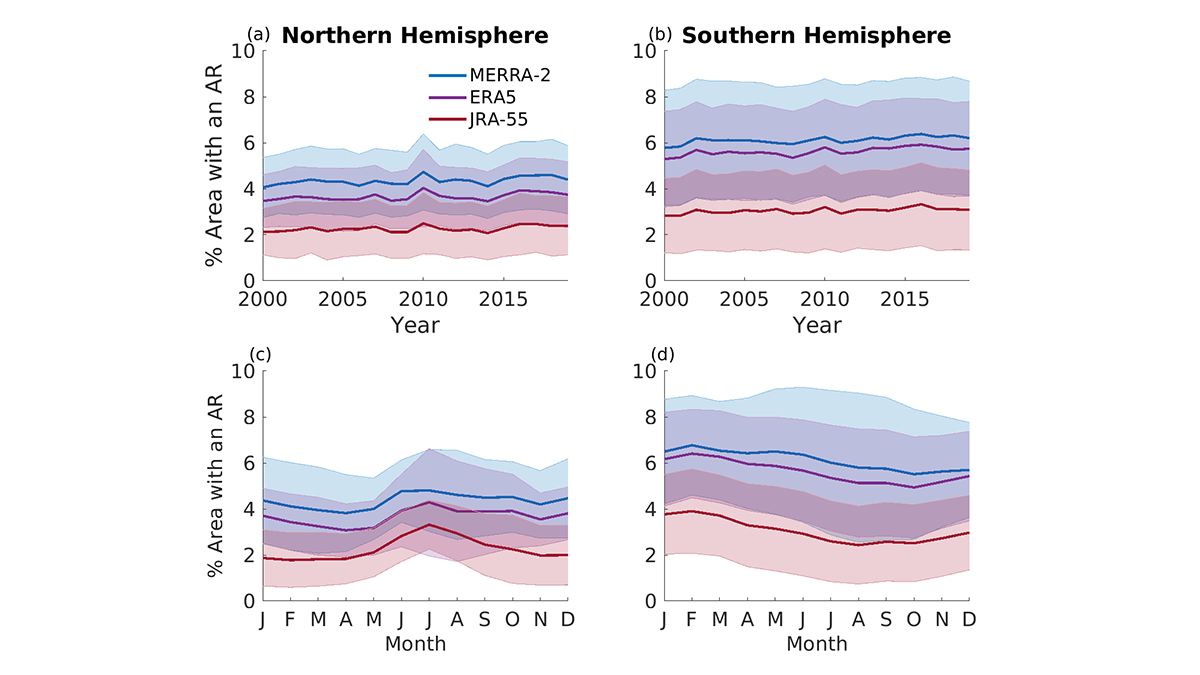Editors’ Highlights are summaries of recent papers by AGU’s journal editors.
Source: Journal of Geophysical Research: Atmospheres
Atmospheric rivers (ARs), or long but narrow regions of enhanced water vapor transport, move water in the atmosphere from lower latitudes poleward and can cause extreme precipitation. Numerical algorithms have been developed to detect atmospheric rivers. However, much uncertainty remains in both the detection methods and the types of atmospheric data products used.
Collow et al. [2022] report results from the Atmospheric River Tracking Method Intercomparison Project (ARTMIP), describing the similarity and difference of atmospheric rivers when eleven detection algorithms and three reanalysis products are used. It showed that the difference is larger among the detection algorithms than among the reanalysis products. Algorithms that use relative thresholds have better agreement between reanalyses than those with absolute thresholds. Results provide benchmarks to interpret atmospheric rivers in observations and model simulations, in addition to adding AR statistics data to public repositories.
Citation: Collow, A. B. M., Shields, C. A., Guan, B., Kim, S., Lora, J. M., McClenny, E. E., et al. (2022). An overview of ARTMIP’s Tier 2 Reanalysis Intercomparison: Uncertainty in the detection of atmospheric rivers and their associated precipitation. Journal of Geophysical Research: Atmospheres, 127, e2021JD036155. https://doi.org/10.1029/2021JD036155
—Minghua Zhang, Editor in Chief, Journal of Geophysical Research: Atmospheres

